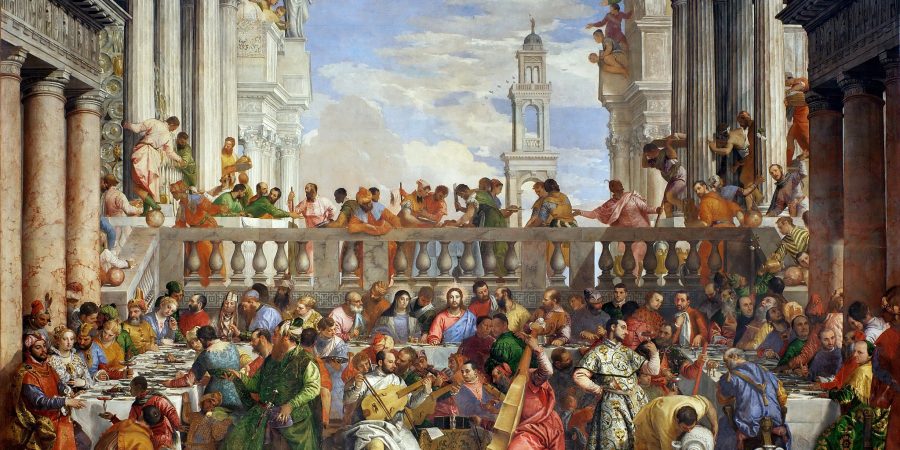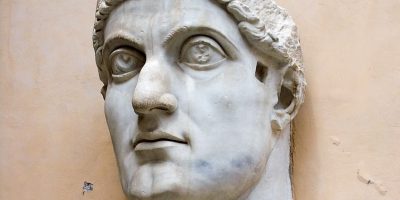Looking at the Gospel of John
Hesham Shehab: Woman! My Hour Has Not Come Yet

Sermon text preached by Rev. Hesham Shehab
Sunday, January 16, 2022
Holy Trinity Lutheran, Burbank, IL
Text: John 2:4, 19:26
Woman! My Hour Has Not Come Yet
In the Gospel of John, the stories that involve Mary the mother of Jesus contain an oddity that baffles many readers. Mary appears only twice in this Gospel, in the wedding at Cana and at the foot of the cross, and both times Jesus addresses her in a way that sounds rude. Instead of calling her “mother,” “mom,” or some ancient Jewish equivalent, he simply calls her “woman” (John 2:4, 19:26). That sounded just as weird in the first century as it does today, so it cries out for an explanation.
In 2007, I attended a lecture at College of DuPage titled: “Jesus is Muslim.” The New York Muslim apologist who was invited by the Muslim Student Association (MSA) to give that lecture picked on that oddity. She claimed that the Jesus of the Quran respected his mother more than the Jesus of the Bible. Unluckily, the MSA rebuffed any voices that tried to respond to her claims. That incident encouraged me to establish the campus ministry Muslims for the Messiah in order to defend the Christian faith on campus and share the love of Christ and His forgiveness.
However, Jesus’s way of calling his mother woman invites us to look below the surface and search for a deeper meaning, one that can enrich our spiritual lives and help us to better understand our faith.
St. Augustine, died in 430 A.D. in Annaba Algeria, and considered one of the Church fathers, once said: “The new is in the old concealed; the old is in the new revealed.” So, the answer to what Jesus said is in the Old Testament.
Let’s begin with the first instance of this strange address, the wedding at Cana. To properly understand this narrative, we have to go back to the very beginning of John’s Gospel. It starts out in a way that is very reminiscent of the seven-day creation story in Genesis:
In the beginning was the Word, and the Word was with God, and the Word was God. He was in the beginning with God. All things were made through him, and without him was not anything made that was made. (John 1-3)
That opening phrase should sound familiar to anyone with even a passing familiarity with Scripture. The first three words are taken verbatim from the very first line of Genesis, “In the beginning God created the heavens and the earth” (Genesis 1:1).
Moreover, if we read the next two chapters carefully, we see that John connects the beginning of his Gospel to this creation story in another, subtler way as well: he narrates a succession of seven days, paralleling the seven days of creation in the first chapter of Genesis.
So, on the seventh day we have the story of the wedding at Cana, which calls to mind the first married couple, Adam and Eve (Genesis 2:21-25), the only human characters in the creation stories in Genesis.
The New Eve
With all these points of contact with the Old Testament’s stories of the world’s creation, John is subtly telling us that Jesus’ ministry inaugurated the new creation, the restoration of everything that Adam and Eve messed up by eating from the forbidden tree. Moreover, while the final story in his new creation week takes place at a wedding, John never says who the bride and groom are. Instead, the only characters whose identities we know are Jesus and his mother, and that is highly significant.
Since the wedding setting calls to mind Adam and Eve, the world’s first married couple, this mysterious lack of any other identifiable characters tells us that Jesus and Mary are themselves the new Adam and Eve of this new creation. Jesus is the head of the new humanity, just as Adam was the head of the old, sinful humanity (Romans 5:12-19; 1 Corinthians 15:22, 45), and just as Eve played a key role in our Fall by eating the forbidden fruit and then giving it to Adam, so too did Mary play a key role in our redemption by giving birth to our savior and by prompting him to perform his first miracle and thus begin his public ministry (John 2:11).
Once we realize this, we can understand why Jesus calls his mother “woman” in this story. In the creation accounts, Eve is called “woman” more often than she is called “Eve” (for example, Genesis 2:22-23), so in the wedding at Cana, the name clearly harkens back to her. By calling his mother “woman,” Jesus is confirming for us that she really is the new Eve.
The Foot of the Cross
And we find similar connections at the foot of the cross, the second time Jesus addresses his mother this way (John 19:25-26). The key here is that elsewhere in John, Jesus describes his death on the cross as the moment of the devil’s defeat (John 12:31-33). Now, at first that may not seem to have much to do with Eve or the creation stories, but let’s dig a bit deeper. After Adam and Eve committed the world’s first sin, God turned to them and punished them, but before he did that, he pronounced a curse on the snake that had tempted them (which was the devil, as Revelation 12:9 tells us):
“I will put enmity between you and the woman, and between your seed and her seed; he shall bruise your head, and you shall bruise his heel.” (Genesis 3:15)
God promised that the snake would fight against the seed of the “woman,” and while the text does not explicitly say who will win, it implies that the woman’s seed will be the victor. For one, the fact that it is a curse on the snake rather than on Adam and Eve implies that the snake will get the worst of it, and secondly, strikes to the head are usually much worse than strikes on the heel. In fact, strikes to the head are often fatal, so the implication is that the snake is going to die. Granted, the devil can’t literally die, so it just means that he is going to be definitively defeated by the seed of the “woman.”
And who is this promised seed? It is Jesus; he is the one who defeated the devil and redeemed the human race. Now, as he himself explains in John’s Gospel, this defeat happened on the cross, so right when he fulfilled the prophecy about the seed of the “woman” who would defeat the devil, he called his mother “woman.” Jesus knew the Old Testament extremely well, so this was not a coincidence. No, it was an intentional allusion to the snake’s punishment back in Genesis.
Jesus is the promised “seed,” who defeated Satan and all his minions.
Back to our Muslims friends, the MSA. Muslims reject the cross and the Quran claims that a look-alike took Jesus’ place on the cross. The Islamic concept of victory has nothing to do with sin and Satan.
Sir Thomas Carlyle wrote a book in the 19th century titled: On Heroes and Hero Worship. Carlyle listed Muhammad, the prophet of Islam as a hero worshipped by his followers, which may be true. We, human beings, love happy endings, where the hero slashes the enemy with his mighty sword and marries the love of his life.
In the eyes of the world, Jesus was an anti-hero, but for us who believe, He was the ultimate hero who crushed the head of Satan and death, when He died on the cross and rose from the dead, to give us eternal life. This is the real victory.
“O death, where is your victory?
O death, where is your sting?”
56 The sting of death is sin, and the power of sin is the law. 57 But thanks be to God, who gives us the victory through our Lord Jesus Christ. (1 Cor. 15). Amen
Hesham Shehab
Read more from Hesham Shehab… https://xpian.news/?s=hesham&submit=Search…H

Hesham Shehab
Adjunct Faculty at College of DuPage, Formerly Adjunct Faculty at American University of Beirut and Pastor at Peace Lutheran Church Lombard, IL Name pronounciation: HI-shahm SHI-hab Hebrews 12: 4 & Philippians 1: 29




Comments are Closed